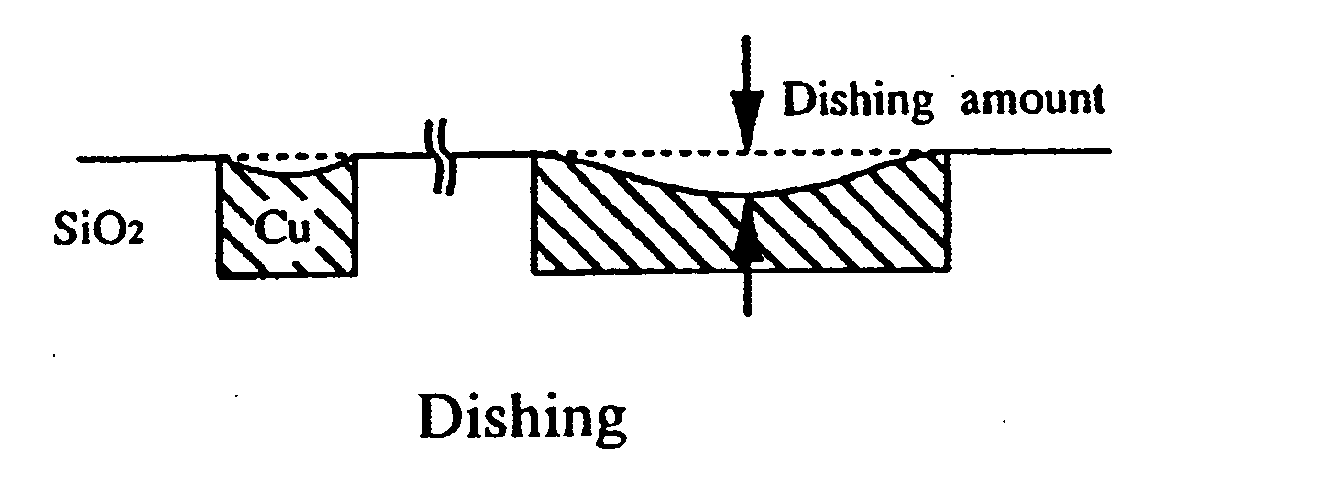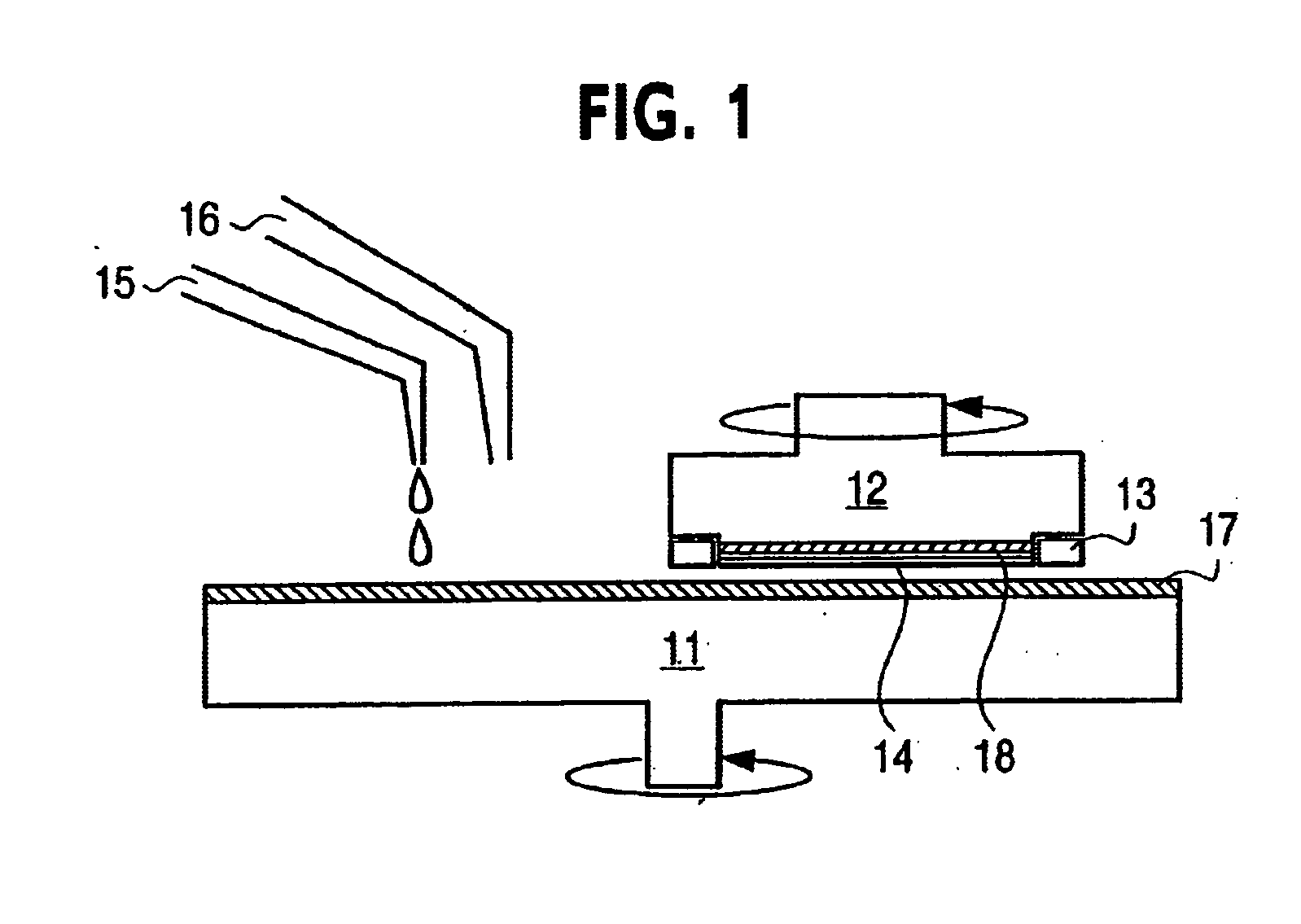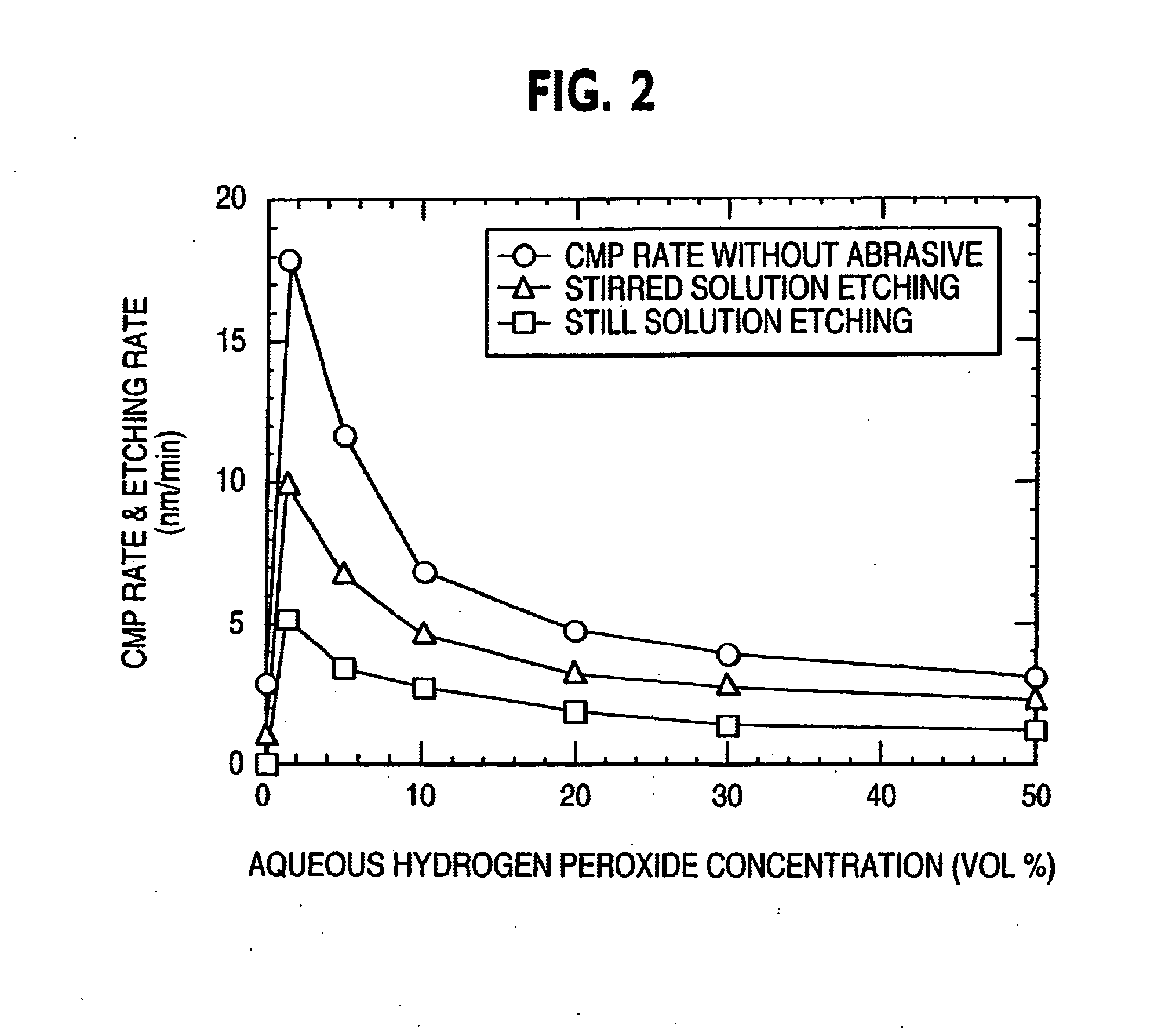Polishing method
a metal film and polishing technology, applied in lapping machines, other chemical processes, manufacturing tools, etc., can solve the problems of excessive polishing, difficult microprocessing by dry etching which was used with aluminum alloy, and difficult microprocessing by dry etching, etc., to reduce peeling, reduce scratches, and control dishing
- Summary
- Abstract
- Description
- Claims
- Application Information
AI Technical Summary
Benefits of technology
Problems solved by technology
Method used
Image
Examples
embodiment 1
[0122] A method of forming a copper interconnection by performing CMP on according to this embodiment will be described.
[0123]FIG. 1 is a schematic view showing a CMP machine used in this embodiment of the invention.
[0124] To perform CMP, a holder 12 which supports a wafer 14 by a backing pad 18 is rotated on a platen 11 to which a polishing pad 17 is attached A retainer ring 13 is provided so that the wafer does not come off during CMP. The down force in CMP was 220 g / cm2, and the rotation speed of platen and holder was 60 rpm. However, the down force and rotation speed are not limited to this.
[0125] In general, the CMP rate is faster if the load and rotation speed are increased, but scratches occur more easily as shown in FIG. 25. However, as the polishing abrasive concentration is low or zero in this invention, not many scratches occur relative to the load The polishing pad used was the polishing pad IC1000 manufactured by the Rodel company.
[0126] The polishing solution of th...
embodiment 2
[0144] In this embodiment, a method will be described where an inhibitor is added to the polishing solution used in Embodiment 1 to further improve polishing characteristics.
[0145] Due to the addition of the inhibitor, the etching rate shown in FIG. 3 decreases, and the ratio of CMP rate to etching rate further increases. As a result, excessive etching of the copper surface during CMP can be prevented and oxidation of the polished copper surface after CMP can be prevented.
[0146] The inhibitor was BTA. 0.1 wt % BTA was added to a polishing solution comprising 5 vol % aqueous hydrogen peroxide and 0.03 wt % citric acid mixed with pure water.
[0147] Even when BTA is added the pH and oxidation-reduction potential of the polishing solution hardly change, and remain in the domain of corrosion of copper shown in FIG. 9.
[0148] The etching rate was measured as in Embodiment 1, and was found to have decreased to about ⅙ compared with the solution before BTA was added.
[0149] CMP was perfor...
embodiment 3
[0154] In this embodiment, the suppression of dishing and erosion due to decrease of the abrasive concentration was examined. The polishing solution of Embodiment 2 (5 vol % aqueous hydrogen peroxide, 0.03 wt % citric acid and 0.01 % BTA mixed with pure water), and the same polishing solution with 2.5 wt % added alumina abrasive (particle diameter: approx. 200 nm) as a comparison were prepared.
[0155] An inlaid interconnection was formed as in Embodiment 2 using these polishing solutions, and the line width dependence of dishing and erosion defined in FIGS. 5A-5B was measured for a width of 0.4-90 μm by photographing a 400 μm length of the interconnection in section with a scanning electron microscope (SEM).
[0156]FIGS. 6A, 6B show the measurement results, and FIGS. 7A, 78, 8A, and 8B show sections which were drawn based on the SEM observations.
[0157] From FIGS. 6A, 6B it is seen that the dishing amount and erosion amount increased as the line width increased. However, the dishing ...
PUM
| Property | Measurement | Unit |
|---|---|---|
| Speed | aaaaa | aaaaa |
| Concentration | aaaaa | aaaaa |
| Solubility (mass) | aaaaa | aaaaa |
Abstract
Description
Claims
Application Information
 Login to View More
Login to View More - R&D
- Intellectual Property
- Life Sciences
- Materials
- Tech Scout
- Unparalleled Data Quality
- Higher Quality Content
- 60% Fewer Hallucinations
Browse by: Latest US Patents, China's latest patents, Technical Efficacy Thesaurus, Application Domain, Technology Topic, Popular Technical Reports.
© 2025 PatSnap. All rights reserved.Legal|Privacy policy|Modern Slavery Act Transparency Statement|Sitemap|About US| Contact US: help@patsnap.com



